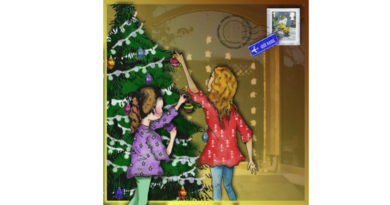Traveling Through Carnival Crowds
“Mummy, they have Fasnachtschüechli at Coop.” This crispy, deep-fried pastry covered in fine sugar is typical at Carnival time, or, as we have come to know it here in Basle, Basler Fasnacht.
I check my diary, and we’re thrilled to find that Fasnacht is indeed coming soon: a colourful event to look forward to. The end of winter. Entertainment for the kids! These thoughts flash through my mind. The children’s excitement is palpable:
“Mummy can I go as Pippi Longstocking this year?”
“No, that’s my costume.”
“I want a cowboy one!”
And that’s when the bigger issues of Fasnacht arise. It’s not just a matter of dressing up and going out for some fun. It’s complicated and depends on whether you are a passive onlooker or you actively partake as a true Fasnächtler. This, in turn, affects your choice of transport to get you through the three days, which offer structured fun within a set framework of specific rules that have taken us a number of trials and errors over the years to get right.
When the children were little, it was acceptable to steer their prams among the queues of onlookers. They dressed up as favourite Disney figures and were happy to collect sweets thrown from the Fasnachtswaage (wagons). Problems arose as the children became older, and standing for all that time left them tired and fed up, so that even the bags full of sweets lost their magic once hands and cheeks had become so sticky that confetti stayed glued to them.
We contacted my husband’s Fasnächtler friends, who invited us to join their Fasnachtswaage. Here the kids could comfortably sit or stand inside the wagon and decide when to throw sweets or when to throw confetti while keeping sweets to eat for themselves. However, we were soon to learn that there was more to Fasnacht than confetti and sweets, and recycling past Halloween costumes was not a part of it.
Arriving with our excited kids, we helped them up onto the decorated wagon. We were asked to help pull the wagon down the procession street along with the other parents. The “wagon home-bar” helped sweeten the three-hour journey as we meandered through the Carnival stream on a stretch that normally takes ten minutes. After a few glasses of white wine and an embarrassed silence one of the ladies turned to me.
“This is Fasnacht – NOT to be mistaken for the German Fasching.” Naturally I inquired about the difference. She was relieved to explain where it lay: in the Larven (Fasnacht masks), which are generally handmade by special craftsmen. “They take many months to create, but you can get cheaper versions in Manor. Now your children are old enough.”
Our task for the following Fasnacht was set. What she hadn’t mentioned was that you need to decide pretty early on. Appearing in the shop a fortnight before Fasnacht, you are sure to be disappointed: leftover costumes are not always in line with the children’s plans. Timing would be our next mission.
This year, I asked my sister-in-law. She knew an address for renting children’s costumes, including Larven, for a pittance. We now had a place on the wagon with the appropriate costumes. The kids were set.
Or so we thought, but we had more to learn. We soon found out that it was forbidden to throw confetti at the adult Waggis (one of the main classic Fasnacht-costumes). These individuals wear large Larven and cycle around in groups with confetti bathtubs, surprising badge-less onlookers (buying the official Basler Fasnacht badge supports the whole endeavor) with showers of confetti. Trying on their very first Larven, the kids realised: “Mummy, we’re supposed to look through its nostrils. I can hardly breathe in here. I hope no-one throws confetti at me with this on!”
Not that this would really stop them. Now that they are getting too old for the wagon, they are thinking about how to master Fasnacht without tired feet. The next step is apparent:
“Mummy, I’d like to be a Waggis; those bicycles look like fun.”
Oh, dear, I wonder what lessons those travels will bring?
By Karin Mohler
I have a boy aged 12 and two girls aged 11 and nearly 7 and a wonderful spoilt beagle named Sherlock. I have lived in between cultures for my entire life. Having no roots doesn’t bind me to any place in particular, but I am careful not to impose that sense upon my children, who have been born and bred here. I have taken a lot of inspiration from the book Third Culture Kids: Growing Up Among Worlds by D. C. Pollock and R. V. Reken.
Note: If you plan to see Basler Fasnacht firsthand, you can view this year’s itinerary in English at the Fasnachts Comité website.
Image by Gzzz from Wikipedia Commons under the Creative Commons Attribution-Share Alike 3.0 Unported license.





